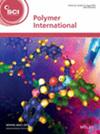求助PDF
{"title":"Design and preparation of polytetrafluoroethylene/carbon (PTFE/C) composite membrane-equivalent foam for gravity-driven emulsion separation","authors":"Xiaoming Guo, Di Lan, Yue Wang","doi":"10.1002/pi.6593","DOIUrl":null,"url":null,"abstract":"<p>Herein, the concept of a membrane-equivalent foam (MEF) with equivalent characteristics to a separated multilayer membrane is proposed and elaborated to mitigate the conflict between efficiency and selectivity in emulsion separation. Porous polytetrafluoroethylene/carbon (PTFE/C) composite MEF with a two-level microporous structure (bubble pores and ice-templated pores) was prepared successfully, derived from a PTFE/glutaraldehyde crosslinked polyvinyl alcohol (PVAG) composite foam green body. The PVAG-based <i>in situ</i> carbon was analyzed as composed mainly of amorphous carbon. The bubble pores were observed to be interconnected by ice-templated pores. The porosity of the porous PTFE/C composite MEF reached a remarkable value of 73.35%. Corresponding to <i>m</i>(PTFE)/<i>m</i>(PVA) values of 14/1, 12/1, 10/1 and 8/1, the average pore sizes of the bubble pores were 32.99, 44.31, 47.33 and 48.01 μm, and the average sizes of the ice-templated pores were about 2.24, 2.77, 3.02 and 3.47 μm, respectively. Meanwhile, the porous PTFE/C composite MEF exhibited near superhydrophobicity in air and superhydrophobicity under oil. In gravity-driven water−oil emulsion separation tests, the oil flux was up to 3541 L h<sup>−1</sup> m<sup>−2</sup> and the separation efficiency reached more than 99.52%. After 20 cycles of testing, the oil flux and separation efficiency remained stable. The membrane-equivalent thickness of the samples from PTFE/C-m1 to PTFE/C-m4 were below 3.47, 4.26, 0.58 and 0.30 nm, respectively, which is about 10<sup>−7</sup>–10<sup>−6</sup> times lower than the height of porous PTFE/C composite MEF. It is reasonable to believe that porous PTFE/C composite MEF could effectively mitigate the ‘trade-off’ effect. © 2023 Society of Industrial Chemistry.</p>","PeriodicalId":20404,"journal":{"name":"Polymer International","volume":"73 4","pages":"287-298"},"PeriodicalIF":2.9000,"publicationDate":"2023-11-17","publicationTypes":"Journal Article","fieldsOfStudy":null,"isOpenAccess":false,"openAccessPdf":"","citationCount":"0","resultStr":null,"platform":"Semanticscholar","paperid":null,"PeriodicalName":"Polymer International","FirstCategoryId":"92","ListUrlMain":"https://onlinelibrary.wiley.com/doi/10.1002/pi.6593","RegionNum":4,"RegionCategory":"化学","ArticlePicture":[],"TitleCN":null,"AbstractTextCN":null,"PMCID":null,"EPubDate":"","PubModel":"","JCR":"Q2","JCRName":"POLYMER SCIENCE","Score":null,"Total":0}
引用次数: 0
引用
批量引用
Abstract
Herein, the concept of a membrane-equivalent foam (MEF) with equivalent characteristics to a separated multilayer membrane is proposed and elaborated to mitigate the conflict between efficiency and selectivity in emulsion separation. Porous polytetrafluoroethylene/carbon (PTFE/C) composite MEF with a two-level microporous structure (bubble pores and ice-templated pores) was prepared successfully, derived from a PTFE/glutaraldehyde crosslinked polyvinyl alcohol (PVAG) composite foam green body. The PVAG-based in situ carbon was analyzed as composed mainly of amorphous carbon. The bubble pores were observed to be interconnected by ice-templated pores. The porosity of the porous PTFE/C composite MEF reached a remarkable value of 73.35%. Corresponding to m (PTFE)/m (PVA) values of 14/1, 12/1, 10/1 and 8/1, the average pore sizes of the bubble pores were 32.99, 44.31, 47.33 and 48.01 μm, and the average sizes of the ice-templated pores were about 2.24, 2.77, 3.02 and 3.47 μm, respectively. Meanwhile, the porous PTFE/C composite MEF exhibited near superhydrophobicity in air and superhydrophobicity under oil. In gravity-driven water−oil emulsion separation tests, the oil flux was up to 3541 L h−1 m−2 and the separation efficiency reached more than 99.52%. After 20 cycles of testing, the oil flux and separation efficiency remained stable. The membrane-equivalent thickness of the samples from PTFE/C-m1 to PTFE/C-m4 were below 3.47, 4.26, 0.58 and 0.30 nm, respectively, which is about 10−7 –10−6 times lower than the height of porous PTFE/C composite MEF. It is reasonable to believe that porous PTFE/C composite MEF could effectively mitigate the ‘trade-off’ effect. © 2023 Society of Industrial Chemistry.
重力驱动乳化分离用聚四氟乙烯/碳(PTFE/C)复合膜等效泡沫的设计与制备
本文提出并阐述了与分离的多层膜具有等效特性的膜等效泡沫(MEF)的概念,以缓解乳液分离中效率和选择性之间的冲突。以聚四氟乙烯/戊二醛交联聚乙烯醇(PVAG)复合泡沫绿体为原料,成功制备了具有两级微孔结构(气泡孔和冰模板孔)的多孔聚四氟乙烯/碳(PTFE/C)复合MEF。分析了聚乙二醇基原位碳主要由非晶碳组成。观察到气泡孔由冰模板孔相互连接。多孔PTFE/C复合MEF的孔隙率达到了73.35%的显著值。m(PTFE)/m(PVA)值分别为14/ 1,12 / 1,10 /1和8/1时,气泡孔的平均孔径分别为32.99、44.31、47.33和48.01 μm,冰模板孔的平均孔径分别为2.24、2.77、3.02和3.47 μm。同时,多孔PTFE/C复合MEF在空气中表现出近超疏水性,在油中表现出超疏水性。在重力驱动水油乳化液分离试验中,油通量可达3541 L h−1 m−2,分离效率可达99.52%以上。经过20次循环试验,油通量和分离效率保持稳定。从PTFE/C-m1到PTFE/C-m4样品的膜等效厚度分别小于3.47、4.26、0.58和0.30 nm,比多孔PTFE/C复合MEF的高度低约10−7 ~ 10−6倍。我们有理由相信,多孔PTFE/C复合MEF可以有效地缓解“权衡”效应。©2023工业化学学会。
本文章由计算机程序翻译,如有差异,请以英文原文为准。




